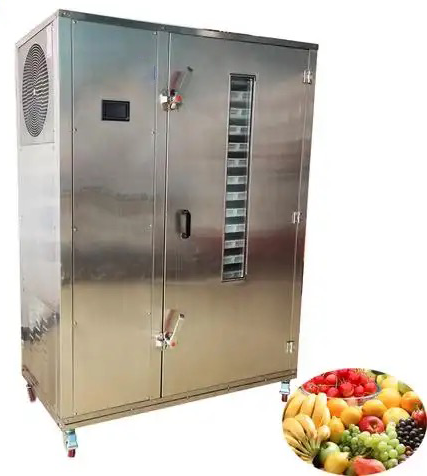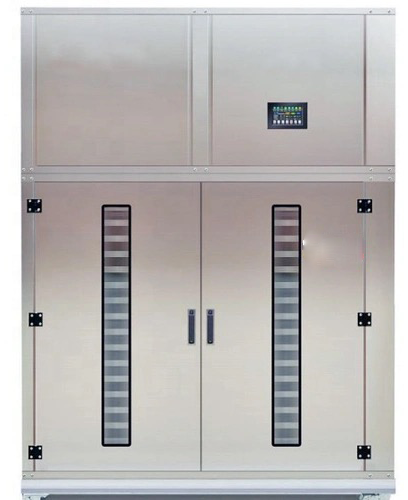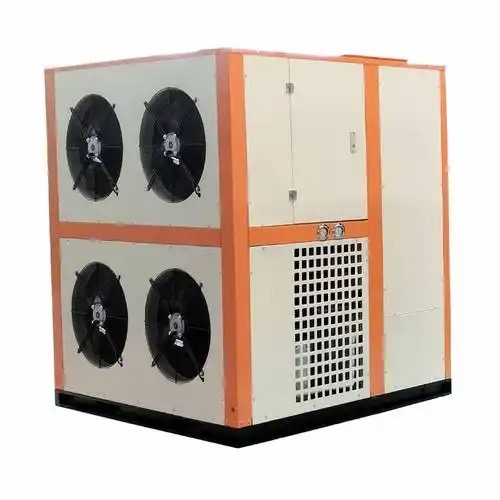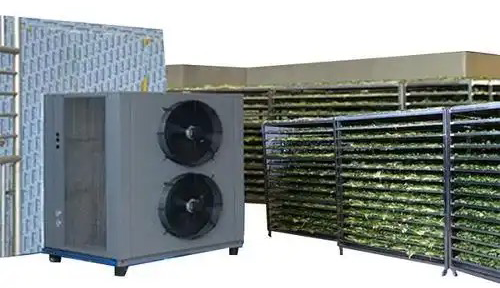
Content Menu
● Introduction
● Understanding Food Drying
>> The Importance of Efficient Drying
● What is a Heat Pump Dryer?
>> How Heat Pump Dryers Work
● Advantages of Heat Pump Dryers
>> 1. Energy Efficiency
>> 2. Preservation of Food Quality
>> 3. Versatility
>> 4. Reduced Environmental Impact
>> 5. Consistent Drying Results
● Comparing Heat Pump Dryers to Traditional Dryers
>> 1. Drying Time
>> 2. Temperature Control
>> 3. Energy Consumption
>> 4. Quality of Dried Products
>> 5. Initial Investment
● Applications of Heat Pump Dryers in Food Processing
>> 1. Fruit Drying
>> 2. Vegetable Drying
>> 3. Herb Drying
>> 4. Meat Drying
>> 5. Seafood Drying
● Conclusion
● Frequently Asked Questions
>> 1. What is the main advantage of using a heat pump dryer for food drying?
>> 2. Can heat pump dryers be used for all types of food?
>> 3. How does the drying time of heat pump dryers compare to traditional dryers?
>> 4. Are heat pump dryers more expensive than traditional dryers?
>> 5. What types of food products benefit most from heat pump drying?
Introduction
In the world of food processing, drying is a crucial step that significantly affects the quality, shelf life, and flavor of food products. As a leading manufacturer of food dryers in China, we specialize in providing OEM services to international brands, wholesalers, and producers. This article will explore the advantages of heat pump dryers, particularly the fastest models, and how they compare to traditional drying methods. We will delve into the technology behind these dryers, their efficiency, and their impact on food quality.

Understanding Food Drying
Food drying is a method of preserving food by removing moisture, which inhibits the growth of bacteria, yeasts, and molds. Traditional drying methods include sun drying, air drying, and using conventional ovens. However, these methods can be inefficient and may compromise the quality of the food.
The Importance of Efficient Drying
Efficient drying is essential for maintaining the nutritional value, flavor, and texture of food. Over-drying can lead to loss of nutrients, while under-drying can result in spoilage. Therefore, choosing the right drying technology is crucial for food manufacturers.
What is a Heat Pump Dryer?
A heat pump dryer is a modern drying technology that uses a refrigeration cycle to remove moisture from food products. Unlike traditional dryers that rely on direct heat, heat pump dryers operate at lower temperatures, making them ideal for sensitive food items.
How Heat Pump Dryers Work
Heat pump dryers work by circulating air through a closed system. The air is heated using a compressor and then passed over the food items. As the air absorbs moisture, it is cooled and dehumidified before being reheated and recirculated. This process allows for efficient moisture removal while preserving the quality of the food.
Advantages of Heat Pump Dryers
1. Energy Efficiency
One of the most significant advantages of heat pump dryers is their energy efficiency. They consume less energy compared to traditional dryers, which can lead to substantial cost savings for food manufacturers. The ability to operate at lower temperatures also reduces energy consumption.
2. Preservation of Food Quality
Heat pump dryers are designed to operate at controlled temperatures, which helps preserve the nutritional value, flavor, and texture of food. This is particularly important for fruits, vegetables, and herbs, which can lose their vibrant colors and essential oils when exposed to high heat.
3. Versatility
Heat pump dryers can be used for a wide range of food products, including fruits, vegetables, meats, and herbs. This versatility makes them an excellent choice for food manufacturers looking to diversify their product offerings.
4. Reduced Environmental Impact
By using less energy and producing less waste heat, heat pump dryers have a lower environmental impact compared to traditional drying methods. This aligns with the growing demand for sustainable practices in the food industry.
5. Consistent Drying Results
Heat pump dryers provide consistent drying results, ensuring that all food items are dried evenly. This consistency is crucial for maintaining product quality and meeting consumer expectations.

Comparing Heat Pump Dryers to Traditional Dryers
1. Drying Time
While traditional dryers may have faster drying times due to higher temperatures, heat pump dryers compensate for this with their efficiency and ability to preserve food quality. The drying time may be longer, but the end result is often superior.
2. Temperature Control
Heat pump dryers excel in temperature control, allowing for precise adjustments based on the type of food being dried. Traditional dryers often lack this level of control, which can lead to over-drying or uneven results.
3. Energy Consumption
Heat pump dryers are significantly more energy-efficient than traditional dryers. This not only reduces operational costs but also contributes to a more sustainable food processing environment.
4. Quality of Dried Products
The quality of dried products from heat pump dryers is generally higher than that from traditional dryers. The lower drying temperatures help retain the natural flavors, colors, and nutrients of the food.
5. Initial Investment
While the initial investment for heat pump dryers may be higher than traditional dryers, the long-term savings in energy costs and improved product quality often justify the expense.
Applications of Heat Pump Dryers in Food Processing
Heat pump dryers are increasingly being adopted in various food processing applications. Here are some common uses:
1. Fruit Drying
Heat pump dryers are ideal for drying fruits such as apples, bananas, and berries. The controlled drying process helps retain the natural sweetness and color of the fruits. For instance, when drying apples, the heat pump dryer can maintain a temperature that prevents browning while effectively removing moisture.
2. Vegetable Drying
Vegetables like carrots, peas, and bell peppers can be effectively dried using heat pump technology. This method preserves their nutritional value and flavor, making them suitable for snacks and soups. The ability to dry vegetables without losing their vibrant colors is a significant advantage for manufacturers.
3. Herb Drying
Herbs such as basil, oregano, and thyme benefit from heat pump drying, which helps retain their essential oils and aromatic properties. This is particularly important for culinary applications where flavor is paramount.
4. Meat Drying
Heat pump dryers can also be used for drying meats, producing high-quality jerky and other dried meat products. The low-temperature drying process helps prevent the growth of harmful bacteria while ensuring the meat retains its flavor and texture.
5. Seafood Drying
Seafood, such as fish and shrimp, can also be dried using heat pump technology. This method helps maintain the delicate flavors and textures of seafood while extending its shelf life. The controlled environment of heat pump dryers minimizes the risk of spoilage and ensures a high-quality end product.
Conclusion
In conclusion, heat pump dryers represent a significant advancement in food drying technology. Their energy efficiency, ability to preserve food quality, and versatility make them an excellent choice for food manufacturers. While they may have longer drying times compared to traditional dryers, the benefits far outweigh the drawbacks. As the demand for high-quality dried food products continues to grow, investing in heat pump dryer technology is a smart move for any food processing business.

Frequently Asked Questions
1. What is the main advantage of using a heat pump dryer for food drying?
The main advantage is energy efficiency, which leads to cost savings and a lower environmental impact while preserving the quality of the food.
2. Can heat pump dryers be used for all types of food?
Yes, heat pump dryers are versatile and can be used for fruits, vegetables, meats, and herbs.
3. How does the drying time of heat pump dryers compare to traditional dryers?
Heat pump dryers may take longer to dry food, but they provide better quality results and preserve nutrients.
4. Are heat pump dryers more expensive than traditional dryers?
The initial investment for heat pump dryers is typically higher, but the long-term energy savings and improved product quality can justify the cost.
5. What types of food products benefit most from heat pump drying?
Fruits, vegetables, herbs, and meats benefit significantly from heat pump drying due to the preservation of flavor, color, and nutrients.












